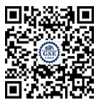Each year, the American Educational Research Association Annual Meeting is the world's largest gathering of education researchers and a showcase for groundbreaking, innovative studies in an array of areas. The 2023 Annual Meeting was a dual-component conference. The place-based component was held in Chicago, IL, April 13-16. The virtual component was held online May 4-5. Log into the platform and mobile app through the end of 2023 to experience on-demand videos of more than 470 virtual sessions and 46 major live-streamed events; explore posters and connect with authors in the i-Presentation Gallery; and chat virtually with meeting attendees. Following are some brief introductions about SOE's students reports in this big event.

From 1978 to 2019, the cumulative number of students studying abroad in China reached 6,560,600. However, due to the global pandemic, the number of international students has declined in recent years. In 2020, the Chinese Ministry of Education has proposed a solution:Sino-foreign cooperative schools are allowed to receive international students who have been hindered by the outbreak. In recent years, 90 Sino-foreign cooperative schools have seen expansion. Under the current situation, how to better promote the psychological health development of students in Sino-foreign cooperative programs and cultivate their national self-confidence is a topic of concern.

School belonging plays an important role in the academic and social development of adolescents. The antecedent variables of school belonging that have been studied include individuals' peer relationships and their social characteristics, such as shyness. However, there are multiple dimensions of peer relationship representations, and existing research is unclear about the unique contribution and relative strength of each dimension of peer relationships to school belonging, and lacks to explore the effect of shyness on these correlations.
This study focused on high school students and used a moderating effects model to test hypotheses. The results showed that, first, overall relatedness to peers and perceived friendship quality were significantly related to school affiliation, with a stronger effect size for overall relatedness. The correlation between number of friends and school affiliation was not significant. Second, shyness negatively moderated the correlation between peer relationships and school affiliation, i.e., shy students were less likely to gain a sense of belonging from their peer relationships. This study demonstrates the importance of peer relationship quality compared to quantity, particularly in relation to the overall sense of connectedness to the classroom community, while highlighting the need for individualized support for shy students.
Reference: AERA 2023




